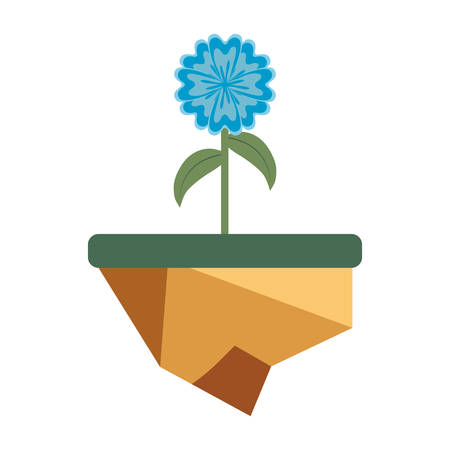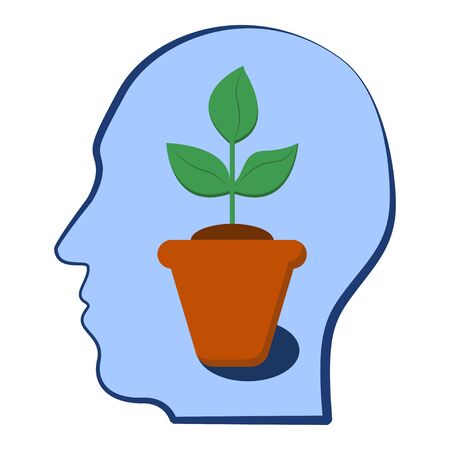Introduction to Gardening Therapy in the Indian Context
Gardening has always held a sacred place in Indian culture, deeply intertwined with both daily life and spiritual well-being. From the ancient gardens of Mughal emperors to the humble kitchen courtyards found in rural villages, the practice of nurturing plants is more than just an agricultural activity; it is a time-honoured tradition that fosters connection with nature and inner peace. In many Indian households, tulsi (holy basil) plants are revered and cared for as part of daily rituals, symbolising purification and health. Traditionally, gardening practices have been associated with mental rejuvenation, communal harmony, and spiritual fulfilment—values that resonate strongly within Indias diverse communities. As urbanisation accelerates and modern life grows increasingly stressful, these age-old practices are finding new relevance as therapeutic interventions for mental health. The convergence of traditional wisdom and scientific inquiry is now highlighting gardening therapy as a promising approach to support individuals dealing with anxiety, depression, and other mental health concerns across India.
2. Mental Health in India: An Overview
India, a land of vibrant traditions and diverse communities, faces a complex landscape when it comes to mental health. In recent years, the prevalence of mental health disorders has seen a significant rise, yet awareness and acceptance remain limited. According to the National Mental Health Survey of India (2015-16), nearly 15% of Indian adults are in need of active intervention for one or more mental health issues. The table below presents a snapshot of common mental health concerns across the country:
| Mental Health Condition | Estimated Prevalence (%) | Key Challenges |
|---|---|---|
| Depression | ~5% | Stigma, lack of diagnosis, limited access to care |
| Anxiety Disorders | ~3% | Cultural misconceptions, social isolation |
| Severe Mental Disorders (e.g., schizophrenia) | ~1-2% | Poverty, lack of specialized services |
| Substance Use Disorders | ~7% | Social stigma, minimal rehabilitation options |
The Stigma Surrounding Mental Illness in India
Mental illness continues to be shrouded in silence within many Indian households. Deep-rooted beliefs and societal pressures often lead to individuals concealing their struggles, fearing discrimination or exclusion from community life. The use of terms like “paagal” (crazy) or “manasik rog” (mental disease) further alienates those affected, creating barriers to seeking help.
Unique Challenges for Indian Communities
The Indian context is marked by urban-rural divides, socioeconomic disparities, and a shortage of trained mental health professionals. The World Health Organization reports that there are less than 0.75 psychiatrists per 100,000 people in India—a stark contrast to global averages. Additionally, traditional family structures sometimes hinder open conversations about emotional well-being.
The Need for Accessible Therapeutic Options
This pressing scenario highlights the urgent need for innovative, culturally sensitive, and accessible therapeutic interventions. Gardening therapy emerges as a promising approach—rooted in Indias agrarian heritage and mindful traditions—to bridge these gaps and foster holistic healing within local communities.

3. Scientific Research Supporting Gardening Therapy
Gardening therapy, also known as horticultural therapy, has been gaining recognition in India and around the world for its positive impact on mental health. Several scientific studies have explored its effectiveness, particularly for conditions such as depression, anxiety, and stress-related disorders.
Indian Studies on Gardening Therapy
In recent years, research conducted in various parts of India has highlighted the potential of gardening therapy in improving psychological well-being. A study carried out by the National Institute of Mental Health and Neurosciences (NIMHANS) in Bengaluru found that participants involved in structured gardening activities reported significant reductions in symptoms of depression and anxiety. The tactile connection with soil, nurturing plants, and observing growth cycles were found to evoke a sense of calmness and purpose among urban dwellers.
Furthermore, community-based initiatives in states like Kerala and Maharashtra have integrated gardening into mental health rehabilitation programs, especially for women and elderly individuals. These interventions not only reduced psychological distress but also fostered social interaction—a crucial aspect in Indian culture where community bonding is deeply valued.
Global Perspectives: Complementing Indian Insights
Globally, numerous peer-reviewed studies echo these findings. For instance, research published in the “Journal of Therapeutic Horticulture” demonstrated that regular gardening sessions led to marked improvements in mood and cognitive functioning among people with clinical depression. Another meta-analysis from the UK emphasized how nature-based interventions—including gardening—were effective adjuncts to conventional therapies for anxiety disorders.
Culturally Relevant Scientific Evidence
The unique spiritual and ecological heritage of India makes gardening particularly meaningful. Traditional Indian healing systems like Ayurveda emphasize harmony with nature as a foundation for mental wellness. Modern scientific inquiry now validates these ancient beliefs: engaging with local flora such as Tulsi (Holy Basil), Neem, or Jasmine not only provides sensory enrichment but also triggers biochemical changes linked to reduced stress levels.
Incorporating such culturally resonant plants into therapeutic gardens has shown to amplify emotional resilience among Indian participants, bridging the wisdom of the past with contemporary science. This seamless integration is paving the way for more holistic approaches to mental health care across the country.
4. Cultural Perspectives: Connecting with Nature in Indian Life
India’s deep-rooted cultural and spiritual relationship with nature forms the backbone of its traditional healing wisdom. From ancient times, Indians have revered trees, plants, and gardens as sacred spaces that nurture both body and spirit. The presence of horticulture in daily life is not only an agricultural necessity but also a profound cultural phenomenon, shaping rituals, beliefs, and even mental health practices.
The Spiritual Significance of Sacred Groves
Sacred groves—known locally as devara kaadu, sarana vanam, or kavu—are protected clusters of trees that serve as living temples across many regions in India. These groves are believed to be the abodes of local deities, spirits, and ancestors. They embody ecological wisdom and spiritual sanctity, often preserved by communities for centuries. Visiting or maintaining these spaces offers a meditative experience, reinforcing a sense of belonging and peace. In modern therapeutic contexts, engaging with such natural environments is seen as a way to restore mental balance and emotional resilience.
Cultural Practices Aligning with Healing Beliefs
In Indian households, gardening is much more than a pastime; it is intertwined with festivals, daily prayers, and seasonal cycles. The cultivation of Tulsi (Holy Basil), worshipped for its healing powers, or the planting of mango and neem trees during auspicious occasions, reflects how horticulture supports spiritual well-being. These traditions encourage mindfulness, patience, and gratitude—qualities that align seamlessly with contemporary principles of gardening therapy for mental health.
Table: Indian Horticultural Traditions & Their Healing Beliefs
| Practice | Cultural/Spiritual Significance | Mental Health Benefits |
|---|---|---|
| Tulsi Plant Worship | Symbol of purity & protection; central to rituals | Calmness, focus in daily routine |
| Sacred Groves Preservation | Belief in divine guardianship; community bonding | Sense of safety, collective identity |
| Mango/Neem Tree Planting | Auspiciousness & purification rituals | Hopefulness, positive anticipation |
| Pongal Harvest Festival Gardening | Celebration of abundance & gratitude to nature | Joyfulness, social connection |
Integrating Tradition with Modern Therapy Approaches
The alignment between India’s horticultural traditions and modern gardening therapy highlights the enduring belief in nature as a healer. By connecting ancient customs with scientific frameworks, mental health professionals in India are creating culturally sensitive interventions. These approaches honour both evidence-based practice and ancestral wisdom—offering a holistic path for healing minds through the vibrant tapestry of Indian gardens.
5. Case Studies and Success Stories from India
Transformative Impact through Grassroots Initiatives
Across India, the roots of gardening therapy have flourished in unexpected places—from bustling urban centres to rural villages. Indian NGOs like The Banyan in Chennai have integrated horticultural therapy into their psychosocial rehabilitation programs, guiding persons with schizophrenia and depression to nurture kitchen gardens. Participants often share that tending to plants brings them “inner shanti” (peace), reduces anxiety, and creates a sense of purpose. In Bengaluru, NIMHANS’s collaborative “Healing Gardens” initiative has seen patients with mood disorders experience improved concentration and self-esteem after participating in garden-based occupational therapy.
Community Projects: Seeds of Healing in Local Soil
Village collectives in Maharashtra and Kerala have transformed vacant plots into lush community gardens, welcoming individuals with mental health challenges to join. These green spaces are not just physical sanctuaries but also platforms for social inclusion. For example, the “Manasika Udyan” project in Pune invites women recovering from trauma to co-create herbal gardens, fostering camaraderie and resilience. Their stories echo a common refrain: working with soil and seeds is grounding, offering daily moments of calm and connection.
Personal Journeys: Blossoming Hope
Individual stories shine as beacons of hope. Ramesh, a young man from Hyderabad living with bipolar disorder, credits his terrace garden for helping him regulate his emotions. He describes watering his marigolds and tulsi as a meditative ritual that helps him “find balance amid chaos.” Similarly, Priya from Kolkata found solace in balcony gardening during her recovery from postpartum depression; her small patch of green became a symbol of renewal and self-care.
The Ripple Effect: Broader Benefits
These real-life narratives illustrate how gardening therapy nurtures more than plants—it cultivates dignity, belonging, and well-being. Indian success stories reveal that integrating traditional practices like growing medicinal herbs or tending sacred Tulsi plants aligns beautifully with scientific approaches to mental health care. As the movement grows, so too does the hope that every Indian seeking healing may find it—one seedling at a time.
6. Challenges and Future Directions
Despite the growing scientific evidence supporting gardening therapy as a holistic approach to mental health in India, several challenges hinder its wider adoption and integration into mainstream care. The first major barrier is rapid urbanisation. As cities expand, green spaces shrink, making it difficult for many urban dwellers to access gardens or outdoor areas suitable for therapeutic horticulture. In metros like Mumbai, Delhi, or Bengaluru, high population density and limited land availability often relegate gardens to luxury status, inaccessible to the common man.
Awareness and Cultural Perceptions
Another significant hurdle is the lack of awareness among both mental health professionals and the general public about the scientific benefits of gardening therapy. Many Indians still perceive gardening as merely a hobby or a rural occupation, rather than a structured intervention with proven mental health outcomes. Additionally, stigma around mental illness often prevents individuals from seeking out alternative therapies.
Resource Limitations and Infrastructure
Resource constraints are a further challenge. Many healthcare facilities in India operate with limited budgets and staff, making it difficult to allocate space, time, or trained personnel for gardening therapy programmes. Rural areas may have more open land but face shortages in funding, training, and logistical support to initiate such interventions on an organised scale.
Pathways Forward
To overcome these barriers, a multi-pronged approach is needed. First, collaboration between governmental bodies, NGOs, and private organisations can help create community gardens even in densely populated areas—think rooftop gardens or vertical planting initiatives inspired by traditional Indian courtyard culture. Second, integrating gardening therapy modules within existing hospital or school wellness programmes can raise awareness and normalise this practice. Training workshops for caregivers and therapists on horticultural techniques relevant to local climates—such as growing tulsi (holy basil), curry leaves, or jasmine—can blend scientific methods with indigenous wisdom.
In conclusion, while challenges remain, the path forward lies in innovative adaptation rooted in Indian context. By embracing creative solutions that respect both science and cultural heritage, gardening therapy can blossom as a vital part of Indias mental healthcare landscape—nurturing not just minds but communities at large.


